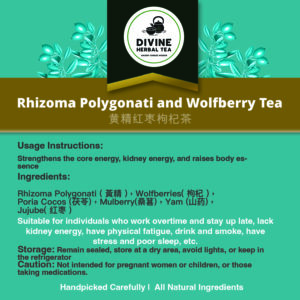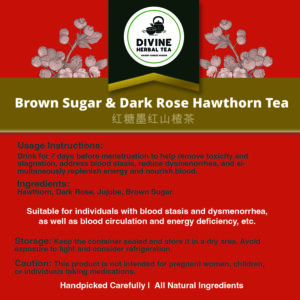“Mulberry,” known as “桑葚” (sāng shèn) in Chinese, refers to the fruits of the mulberry tree, scientifically known as Morus. Mulberries come in various colors, including red, black, and white, and they are widely appreciated for their taste, nutritional value, and potential health benefits.
Here are some important aspects of mulberries (桑葚) and their uses:
Nutrient-Rich: Mulberries are packed with nutrients, including vitamins (such as vitamin C, vitamin K, and B vitamins), minerals (such as iron and potassium), dietary fiber, and antioxidants.
Varieties: There are different types of mulberries, each with its own unique flavor and characteristics. Common varieties include red mulberries, black mulberries, and white mulberries.
Sweet Flavor: Mulberries have a naturally sweet flavor that can vary based on the variety and ripeness of the fruit. They are often enjoyed as a fresh snack.
Culinary Use: Mulberries are used in various culinary dishes, including desserts, jams, pies, and smoothies. They can also be dried and used as a nutritious snack.
Health Benefits: Mulberries are believed to offer several potential health benefits, including:
Antioxidant Protection: Mulberries are rich in antioxidants, including anthocyanins, which help protect cells from oxidative stress and inflammation.
Digestive Health: The dietary fiber in mulberries can support digestive health and regular bowel movements.
Blood Sugar Regulation: Some studies suggest that mulberries may help regulate blood sugar levels, making them suitable for individuals with diabetes.
Heart Health: The fiber, potassium, and anthocyanins in mulberries may contribute to heart health by promoting healthy blood pressure and cholesterol levels.
Immune Support: The vitamin C content in mulberries can support a healthy immune system.
Dried Mulberries: Dried mulberries are a popular snack and can be enjoyed on their own or added to cereals and yogurt.
Traditional Medicine: In traditional Chinese medicine (TCM), different parts of the mulberry tree, including leaves and bark, have been used for their potential medicinal properties.
Silkworms’ Food Source: Mulberry leaves are the primary food source for silkworms, which are used in the production of silk.
Cultural Significance: Mulberries hold cultural importance in various regions and are often associated with folklore and traditions.
When incorporating mulberries into your diet, consider sourcing them from reputable sources and enjoying them in moderation as part of a balanced diet. If you have specific health concerns or are taking medications, it’s a good idea to consult with a healthcare professional before making significant changes to your diet.
“Rose,” known as “玫瑰” (méiguī) in Chinese, is a popular and cherished flower with cultural, aesthetic, and therapeutic significance. Roses are widely grown for their beauty, fragrance, and various uses in different cultures around the world.
Here are some important aspects of roses (玫瑰) and their significance:
- Cultural Symbolism: Roses have long been associated with love, beauty, and romance in various cultures. Different colors of roses are often used to convey different emotions and messages. For example, red roses are commonly associated with love and passion, while white roses can symbolize purity and innocence.
- Aesthetic Beauty: Roses are admired for their exquisite beauty and diverse colors. They are commonly used in floral arrangements, gardens, and decorations for weddings, celebrations, and other special occasions.
- Fragrance: Roses are known for their captivating fragrance, which is used in perfumes, cosmetics, and aromatherapy products.
- Culinary Use: Rose petals and rose water are used in culinary preparations to add a delicate floral flavor and aroma to dishes, desserts, beverages, and teas.
- Therapeutic Use: Rose petals and rose essential oil are valued for their potential therapeutic properties. Rose oil is used in aromatherapy for its relaxing and mood-enhancing effects.
- Skincare: Rose water and rose-infused products are used in skincare routines for their potential benefits for skin health, including soothing and moisturizing properties.
- Medicinal Use: In traditional herbal medicine, roses have been used for their potential health benefits, such as supporting digestion, relieving stress, and promoting relaxation.
- Cultural Practices: Roses hold cultural significance in various traditions and festivals. For example, roses are often used in wedding ceremonies, Valentine’s Day celebrations, and religious rituals.
- Art and Literature: Roses have inspired artists, poets, and writers throughout history. They are often featured in literature, paintings, and other forms of artistic expression.
- Varieties: There are numerous species and varieties of roses, each with its own unique characteristics, including flower size, color, and growth habit.
“Poria Cocos,” known as “茯苓” (fú líng) in Chinese, is a type of medicinal mushroom commonly used in traditional Chinese medicine (TCM) and other traditional healing practices. It is derived from the sclerotium (a compact mass of fungal hyphae) of the Poria cocos fungus. Poria has been used for centuries for its potential health benefits and is considered one of the fundamental herbs in TCM.
Here are some important aspects of Poria Cocos (茯苓) and its uses:
Traditional Medicine: Poria Cocos is a widely used herb in TCM, where it is valued for its potential to promote balance and support various aspects of health.
Spleen and Kidney Health: In TCM, Poria is often used to support the spleen and kidney organs, which are believed to play essential roles in digestion, water metabolism, and overall vitality.
Diuretic Properties: Poria is believed to have diuretic properties and is used to promote urination and address issues related to water retention.
Calming Effects: Poria is sometimes used to help calm the mind and promote relaxation, making it useful for managing stress and sleep disturbances.
Digestive Support: Poria is used in TCM to support digestion, particularly for individuals with conditions related to dampness and stagnation in the body.
Immune Modulation: Some research suggests that Poria may have immune-modulating effects, potentially supporting the body’s immune response.
Gentle Herb: Poria is often considered a gentle and mild herb that can be suitable for long-term use.
Culinary Use: In some Asian cuisines, Poria is used in culinary dishes and soups, particularly in traditional Chinese herbal cuisine.
Safety and Precautions: Poria Cocos is generally considered safe when used under the guidance of a qualified healthcare professional or TCM practitioner. As with any herbal remedy, it’s important to use it appropriately, especially if you have underlying health conditions or are taking medications.
Processing and Formulations: Poria is often used in combination with other herbs in traditional formulas to enhance its effects and promote balance within the body.
It’s important to remember that the use of Poria Cocos (茯苓) is deeply rooted in traditional knowledge and practices. If you’re interested in exploring its potential benefits, consult with a knowledgeable healthcare professional or licensed herbalist who can guide you based on your individual health needs and circumstances.
Lilies, known as “百合” (bǎi hé) in Chinese, are not only known for their exquisite beauty but also have several potential health benefits:
Rich in Nutrients: Lilies are a good source of essential nutrients, including vitamin C, vitamin B6, potassium, and dietary fiber.
Antioxidant Properties: Lilies contain antioxidants like flavonoids and polyphenols, which can help protect cells from oxidative damage and reduce the risk of chronic diseases.
Anti-Inflammatory: Some compounds found in lilies may have anti-inflammatory properties, which can help reduce inflammation and alleviate symptoms associated with inflammatory conditions.
Heart Health: The potassium content in lilies can contribute to heart health by helping regulate blood pressure. Additionally, the fiber content may assist in lowering cholesterol levels, reducing the risk of heart disease.
Immune Support: The vitamin C content in lilies is beneficial for the immune system, as it helps strengthen the body’s defenses against illnesses.
Digestive Health: Lilies are a good source of dietary fiber, which aids in digestion, promotes regular bowel movements, and prevents constipation.
Weight Management: Lilies are relatively low in calories and fat, making them a healthy addition to a weight management plan.
Respiratory Health: In traditional Chinese medicine, lilies have been used to address respiratory issues such as coughs and lung congestion. They are believed to have expectorant properties that help clear phlegm and ease breathing.
Skin Health: The antioxidants in lilies may contribute to healthy skin by combating free radicals and supporting collagen production.
Natural Diuretic: Lilies have mild diuretic properties, which can help with fluid balance in the body and may be beneficial for individuals with edema or high blood pressure.
It’s important to note that while lilies may offer health benefits, they should be consumed in moderation and prepared properly. Some species of lilies can be toxic if ingested, so it’s crucial to verify the type of lilies you are consuming and ensure they are safe for consumption. If you are uncertain, it’s best to consult with a healthcare provider or a knowledgeable herbalist before using lilies for medicinal purposes or as part of your diet.
“Jujube” is the common name for the fruit of the Ziziphus jujuba tree. In Chinese, it is known as “红枣” (hóng zǎo), and it is commonly referred to as “red date.” Jujube is a popular fruit in China and other Asian countries, and it has been used for its nutritional and medicinal benefits for centuries.
In Chinese cuisine and traditional medicine, jujube is highly regarded for its various properties and uses. It’s often consumed as a dried fruit or used to make teas, soups, and other dishes. The Chinese characters “红枣” literally translate to “red date,” highlighting the resemblance of jujube to dates in appearance.
In addition to the benefits mentioned earlier, here are some ways jujube (红枣) is used in Chinese culture:
Nourishing Blood: Jujube is believed to have nourishing properties, particularly for improving blood circulation and supporting overall vitality.
Qi (Vital Energy) Tonic: In Traditional Chinese Medicine (TCM), jujube is considered a Qi tonic. It is thought to replenish and harmonize the body’s vital energy.
Herbal Formulas: Jujube is often included in various herbal formulas in TCM to enhance the effects of other herbs and promote balance in the body.
Strengthening the Spleen: In TCM, jujube is associated with the spleen meridian and is used to strengthen digestion and support the spleen’s functions.
Tonifying Herbs: Jujube is sometimes combined with other tonifying herbs in traditional formulas to enhance their benefits.
Balancing Yin and Yang: Jujube is considered a neutral fruit that can help balance the body’s Yin and Yang energies.
Culinary Use: Jujube is used in various Chinese culinary dishes, both savory and sweet. It can be added to soups, stews, porridge, and desserts.
Candied Jujubes: Jujubes can be candied and enjoyed as a sweet treat.
Symbolic Significance: Jujubes are also associated with festivals and celebrations in Chinese culture, often symbolizing happiness and good wishes.






